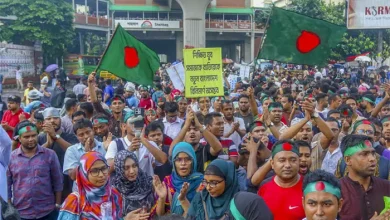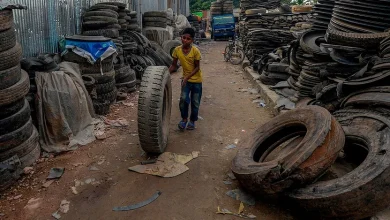Should govt suspend renewable power projects or renegotiate their tariffs to speed up green goals?

Instead of scrapping the letters of intent for 31 renewable power projects totalling 2,678MW capacity, the government can renegotiate the power tariff of these projects and secure the most cost-effective deals in the shortest possible time.
Industry insiders said the tariff offered by these solar projects ranges between US 9.7 cents and 10.6 cents per kilowatt hour. These offers were made more than a year ago – and within this period the price of solar modules marked a significant drop by 20%. Solar modules take up 35% of the project costs.
This created the scope for the government to renegotiate the price downward by at least 1 cent and a maximum of 1.5 cents. That would put the solar power price at a record low for Bangladesh.
The government last month decided to scrap the letters of intent of these renewable projects as these were based on unsolicited negotiations. The energy adviser told TBS that the government would opt for fresh and open tender. This is being done to ensure fairness and competition.
While this reason for cancellation is just – the truth is, holding competitive and fair bidding in Bangladesh’s infrastructure sector is extremely difficult and time-consuming, especially when a project requires land purchase.
In addition, when the government issued Letters of Intent (LOIs), the power companies started investing in the projects by purchasing land.
Land purchase and its development contribute more than 12% of the project cost. “But it can be significantly higher,” said a solar power project manager.
“Once the authorities declare where they want to build a power project the local goons and politicians would instantly move to make any land purchase difficult by hiking land prices many times,” he pointed out.
This makes project land purchase many times costlier and very challenging.
If the main goal is to ensure a fair and cheaper power tariff, open tender for such projects in the prevailing social behaviour may not succeed, said an investor.
Bangladesh is already lagging way behind its green goals. The country spends around $5 billion to import primary fuel to run its gas-, coal- and oil-based power plants. With the dollar crisis still gripping the economy, the government has huge arrears in the energy sector.
But once we build a solar or wind power project, the nation gets to generate power without depending on any fuel import. According to solar power producers, the 31 power projects in question can replace $820 million worth of fossil fuel imports while providing direct jobs to 10,000 people.
Besides, most of these projects are set to be built on barren lands or lands that are suitable for one crop located mostly by river banks that need to be significantly developed. Such activities would have an immediate positive impact on local economies.
Another good aspect is that some of these power projects have a partial capacity to store power. Typically, solar power projects operate in daylight. The new technology allows large-scale batteries to store daytime power to be supplied at night.
Unlike in the past, the new solar power plants encourage the cultivation of a crop in a year. Therefore, the land usage is more productive than before.
In line with the rest of the world, Bangladesh had set a goal of ensuring 15% of its power from renewable resources by 2030 and 40% by 2040.
But, so far, the achievements hover around just 3% – which is also why the government should look at the ongoing projects in a different light.
In the long term, as part of the climate goal, all countries of the world would have to switch to renewable power and give up fossil fuels.
Why is solar power in Bangladesh so costly?
When Indian solar power costs around just 3 cents, Bangladesh’s existing ones cost 11 to 15 cents. Bangladeshi solar power costs way higher than gas-, coal- or sulphur oil-based power.
For India and China, solar power generation is way cheaper because they have their own technology and a low-cost financing system. The average time to complete a 50MW solar power project in India and China is between nine to 12 months.
However, in Bangladesh, similar projects typically take three to four years to complete. These delays are primarily caused by challenges in acquiring land. The process involves finding suitable land, obtaining necessary permissions from the deputy commissioner’s (DC) office – which can sometimes involve bribes – and then transferring land ownership to the power company, all of which consumes significant time.
Till the land is ensured, the power company cannot sign the power purchase agreement (PPA) as per their LOI. And without all of these, the company cannot arrange the finances.
Such hurdles are absent in India or China where they have many barren lands and have different kinds of leasing arrangements for land usage.
Again, Bangladeshi project lands are located on low-lying river banks – which need to be developed using imported raw materials. Whereas India and China have adequate stones and other civil construction materials produced locally.
In Bangladesh, the power developers use high poles to elevate the solar modules to avoid damage by floods. This also adds extra cost.
This year, the government also introduced a 5% tax on solar power equipment. Additionally, there is a 6% withholding tax on solar projects, deducted at source by the power buyer (the power development corporation) when making payments for purchased electricity.
While such initiatives should ideally be supported with zero taxation, these measures ultimately increase the overall cost of power production.







